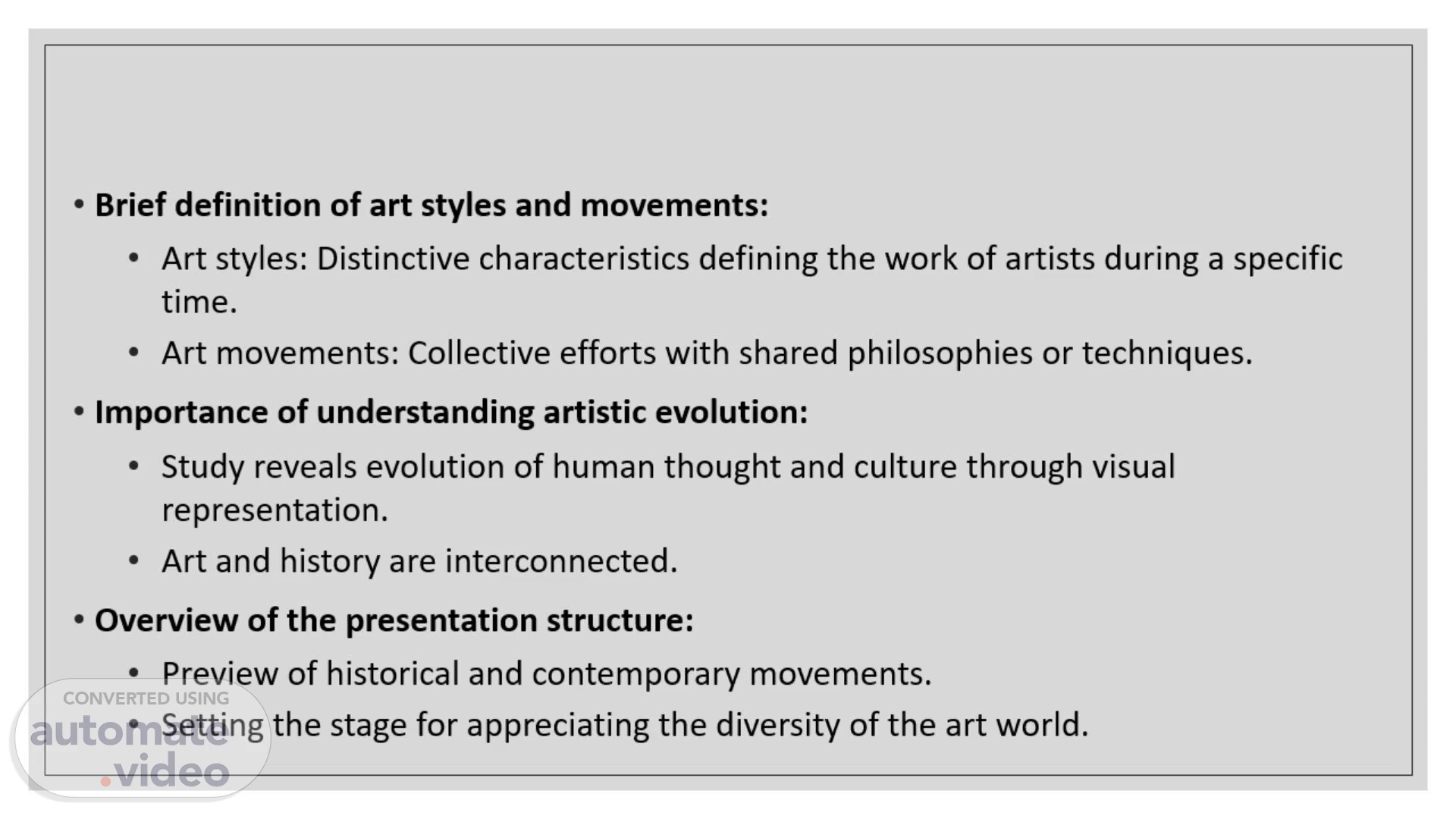
Introduction to Art Styles and Movements
Scene 1 (0s)
[Audio] Welcome, everyone. In this presentation, we'll embark on a fascinating journey through the diverse world of art styles and movements. Art styles are the unique characteristics that define the work of artists during a specific time, while art movements are collective efforts marked by shared philosophies or techniques. Understanding this evolution is crucial, as it allows us to trace the development of human thought and culture through visual representation.".
Scene 2 (30s)
[Audio] Now, let's dive into the historical tapestry of art. The Renaissance, with its celebration of the human form and intellect, marked a rebirth of classical art. The Baroque era brought us intense emotion, dramatic lighting, and dynamic compositions. Moving forward, Romanticism embraced vivid colors, dramatic scenes, and individual expression. Realism, in the mid-19th century, shifted towards accuracy and truthfulness in depicting everyday life. Each movement had its unique characteristics and influential figures shaping the course of art history..
Scene 3 (1m 11s)
[Audio] As we progress into the 20th century and beyond, we encounter the dynamic shifts of modern and contemporary art. Cubism, with Picasso and Braque, deconstructed objects into geometric forms. Surrealism explored the unconscious mind, while Abstract Expressionism embraced spontaneous, emotional expression. The Pop Art movement celebrated popular culture, with icons like Andy Warhol. These movements showcase not only artistic innovation but also the changing landscapes of thought and society..
Scene 4 (1m 48s)
[Audio] In the contemporary art scene, diversity reigns. Influenced by globalization and technology, artists today explore various styles and mediums, from traditional painting to digital and performance art. Street art, as seen in the works of Banksy, has become a powerful form of expression, and technological advancements, like virtual reality installations, expand the possibilities for artistic creation. Artists like Ai Weiwei exemplify the fluidity and boundary-pushing nature of modern art..
Scene 5 (2m 22s)
[Audio] In conclusion, let's reflect on the rich tapestry of art we've explored today. From the Renaissance to contemporary times, each era has contributed to the evolution of artistic expression. The continual evolution of art is a testament to its dynamic nature. I encourage you to engage further—visit local galleries, museums, and contemporary art spaces. Join discussions, and deepen your appreciation for the diverse expressions of human creativity. Thank you for your time, and as we look ahead, let's anticipate the exciting possibilities and future developments in the ever-evolving world of art..